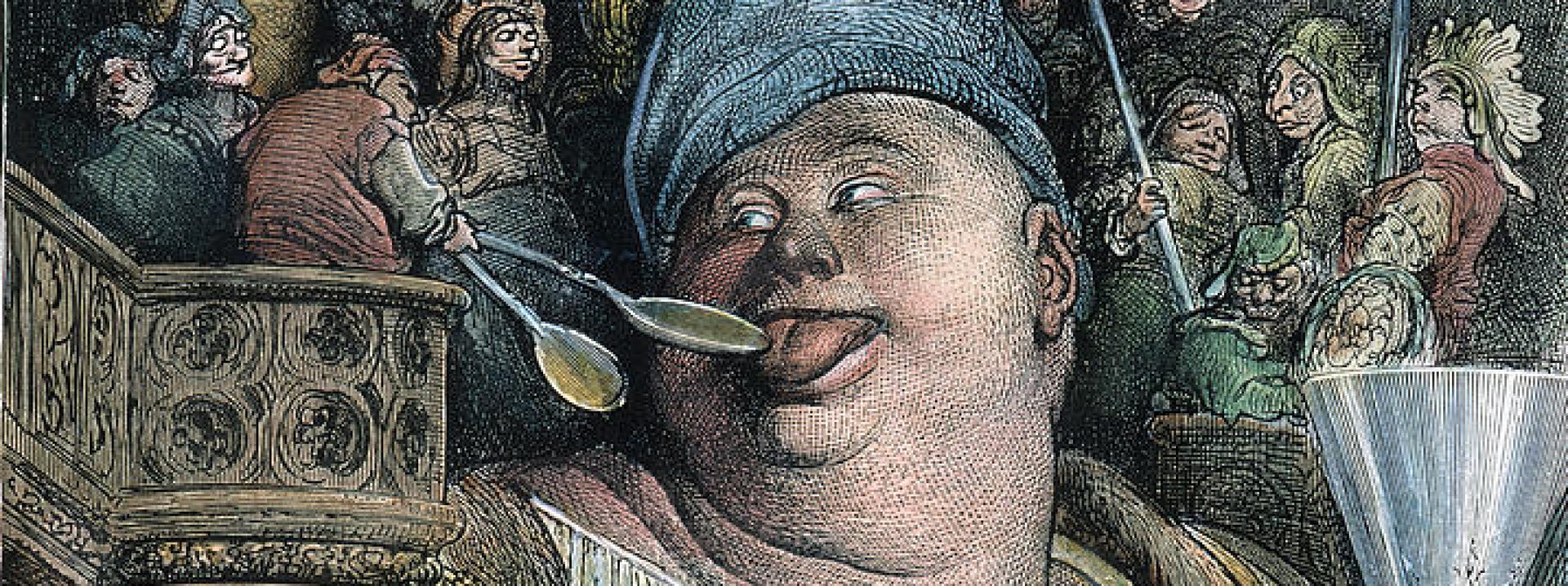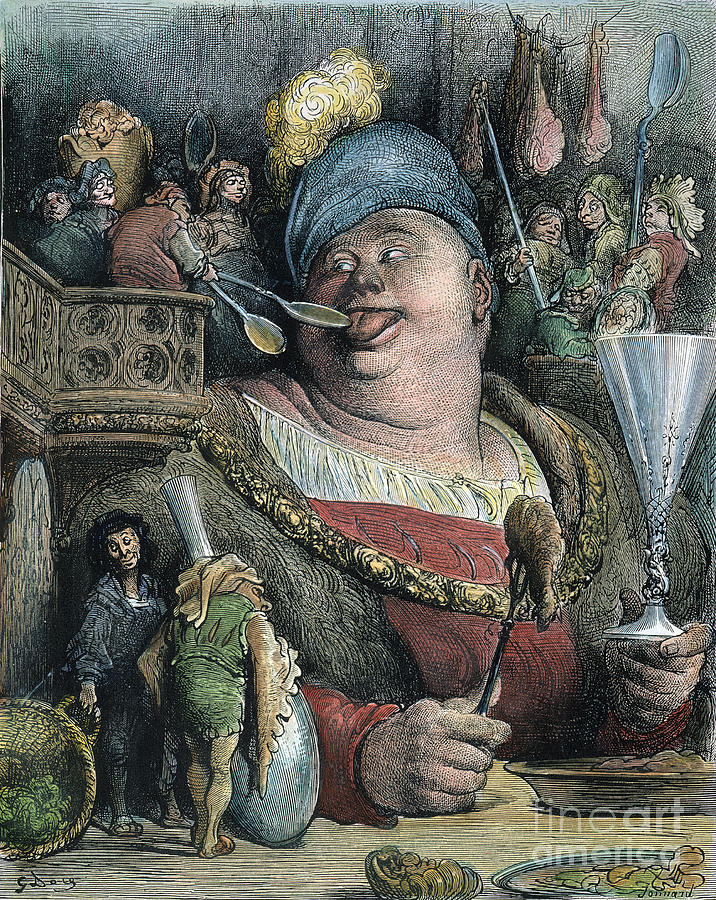Hi all! For my appetizer this week, I want to start by sharing some political cartoons by Thomas Nast, an American political illustrator from the late nineteenth century. Nast’s illustrations include a lot of exaggeration of features, degradation of powerful figures, and using the body for symbolism. I want to spend some time thinking about the more direct political goals of the Carnivalesque/Grotesque, especially when it comes to power hierarchies in these images. Below I have a quote from Bakhtin followed by six illustrations and some discussion questions.
“All were considered equal during carnival. Here, in the town square, a special form of free and familiar contact reigned among people who were usually divided by the barriers of caste, property, profession, and age… People were, so to speak, reborn for new, purely human relations. These truly human relations were not only a fruit of imagination or abstract thought; they were experienced. The utopian ideal and the realistic merged in this carnival experience, unique of its kind” (Rabelais and His World, 10).
After looking at these illustrations, consider the following questions for discussion:
- Who has power in these illustrations? The subjects? The artist? The audience? How are power hierarchies reversed/shifted here?
- Do these illustrations help achieve a “utopian ideal,” as Bakhtin says? Is their political purpose aligned with what Bakhtin would view as the political purpose of the Carnivalesque?
- Are these images still Carnivalesque when specific individuals are being targeted or degraded to the point of inhumanity?


While looking at these political cartons I would think that the illustrator has the power because this is a message to the people about the government or people in power. But the audience holds the power of perception since there are sometimes more than one message to take away from the illustrations. When these illustrations were first made did everyone have access to them like we do to the daily paper? Since anyone can make a political cartoon, the carnivalesque aspect of community is there. Also to the last question, the images can be carnivalesque because they have parody/satire of politics that exists in Bahktin’s carnival.
I agree with Tia that the illustrator seems to have a large slice of the power, but that may be warped by our hindsight and removal from the actual hierarchies of domination that were present when these cartoon were created. The person who tells the story of a factual situation always has a certain degree of power since they are the ones entrusted to filter the sequence of events into something digestible, and political cartoonists are especially ‘powerful’ in that sense because their medium offers them a lot of license. The image of the Irish Riot, for instance, makes an *argument* by its manipulation of Irish bodies that carries weight because of its medium. That being said, I’m not sure how *powerful* cartoonists have ever been beyond the scope of their own art.
This issue does bring up interesting questions about how carnivalesque/grotesque something can be if it’s claiming to represent historical truth (which can be contemporary or long since over)– nothing we’ve read so far sincerely makes that claim (though with Bakhtin this is a sticky subject). The implication of truth is problematic because *its* manipulation has consequences for day to day life, which, like it or not, involves serious decisions. It also raises interesting questions about if anyone involved in the production/consumption of a carnivalesque work ought to have power over anyone else– the only situation in which that might be amenable to the carnivalesque is when the *audience* has the power. With any literature (very broadly defined) the audience has the power of interpretation, which is vast, but the onus of criticism doesn’t seem particularly carnivalesque (in that criticism doesn’t seem like a carnivalesque activity). In any case, my main concern is that the processes of the carnivalesque are warped when they claim to represent even the metaphorical truth of *actual fact*, even though these images obviously employ the grotesque aspect to a high degree.
Thank you guys so much for your comments so far! Helena, I really liked your thought about whether the Carnivalesque can depict true historical events, and I think it’s important to consider how this might hinder the supposed power that these images might give to the illustrator and author. Tia, I think your question about community and access is an important one, and it’s what I want to focus on for my redirection. During this time period, there were certain prominent illustrators (like Nast) who consistently had their cartoons published, and were political illustrators by profession. The average person couldn’t necessarily share their ideas in the same way. Today, on the other hand, most political illustrations can be found online instead of or in addition to in newspapers. We see most of our political satire and illustration in the form of web comics and memes, which seems to allow for more varied opinions to circulate, as anyone can make/post these. So my next questions is: does the internet solve some of the problems that we noticed with power in the Nast illustrations? Does the more universal accessibility of online content make web comics and memes Carnivalesque where older political cartoons may not be? Excited to see your thoughts!
I think your suggestion is really evocative– one facet of the internet’s democratization of access with regard to political imagery could be described as carnivalesque is its anonymization of the the creator. Thinking of memes specifically: they’re never signed, often reposted without credit, recreated either on accident on or purpose, and circulated as a thing without an author. This seems like it fundamentally undercuts the authority of the footlight that demarcated Nast from the consumers of his work and caused hesitation earlier in the conversation. That being said, online communities are also insular in their own ways– despite how much wider the access is to information and opinion-sharing platforms nowadays, it’s also shockingly easy to filter out what you don’t want to say/hear. For instance, I follow a twitter account literally made to make fun of ‘Boomer memes,’ which doesn’t fit into an ideal carnivalesque picture of media consumption (https://twitter.com/NoContextBoomer). Not to be that person, but we *do* find ourselves in echo chambers even in places where a majority of the world might theoretically be present. I wonder if being able to exclude anyone based on conflicting opinion, and in fact being required to exclude people for the viability of your use of any platform, undercuts the carnivalesque in a new way: do we gain one facet of the carnivalesque, the communal, at the expense of the universal in online communities?
Yeah memes are very popular now and their availability now in is stark contrast to these political cartoons back then when it wasn’t an easily accessible profession. I think that the acessibility is that main difference between now and then. The internet allows for people to consume media and meme about it online and have tons of people able to view. The more popular that a person is the more reach their illustrations would have. Although the internet does a great job at increases accessibility it doesn’t eliminate it completely.
I agree that the internet is a mixed bag with regards to accessibility. With the advent of influencers (etc etc), we’ve seen accessibility devolve into social media celebrities taking advantage of the wide reach of their platform and making obscene amounts of money by doing really shady stuff (I’m thinking specifically of constantly marketing merch to children). There’s also been a lot of controversy lately about the ‘YouTube algorithm’ and how it rewards very specific things about the consumption of a creator’s content. While accessibility is democratized, the platform is the thing that decides *what sort of content or opinion* gets to be rewarded by advertisement and suggestion to its users. In that sense, while theoretically we all have more potential to share our opinions through whatever medium (including whatever format we want to call the descendant of the political cartoon), those opinions are only spread with the endorsement of the platform they’re hosted on. That kind of pseudo-censorship and selectivity feels pretty uncarnivalesque since it discriminates between discourses and privileges the unobscene more often than not.
Hello! I just want to say thank you guys again for your thoughtful comments this week! I think that this conversation brought up a lot of really interesting questions, like whether or not the Carnivalesque can depict true historical events, who has power when it comes to political illustrations, and how accessibility plays a role in the Carnivalesque. A lot of these questions are difficult to answer, but I think we did a really great job of working through some of the obstacles that prevent these illustrations from being Carnivalesque and looking for ways around these obstacles in a more modern lens. Especially since we had smaller groups this week, thank you guys so much for still making our discussion super thought-provoking and insightful!